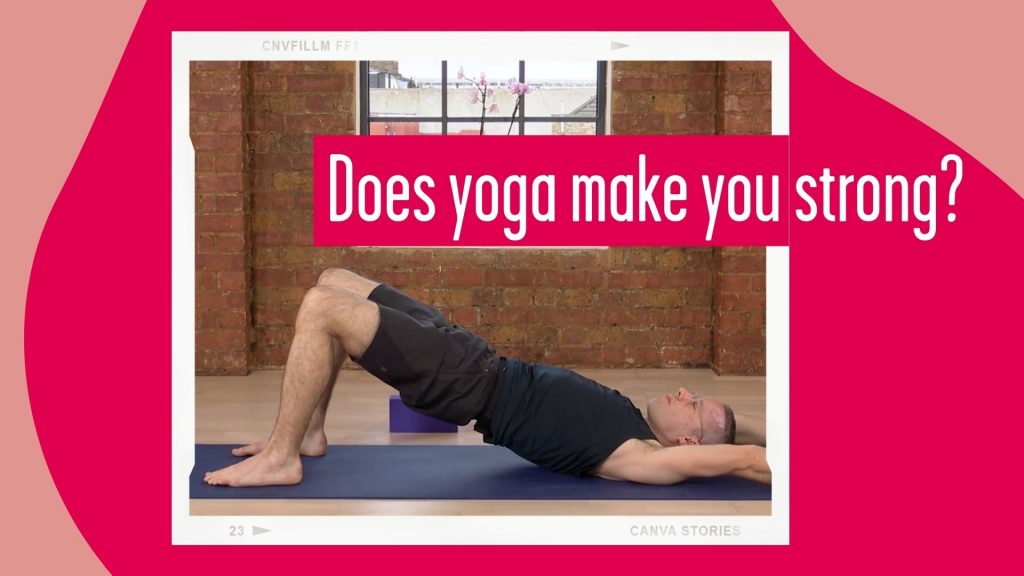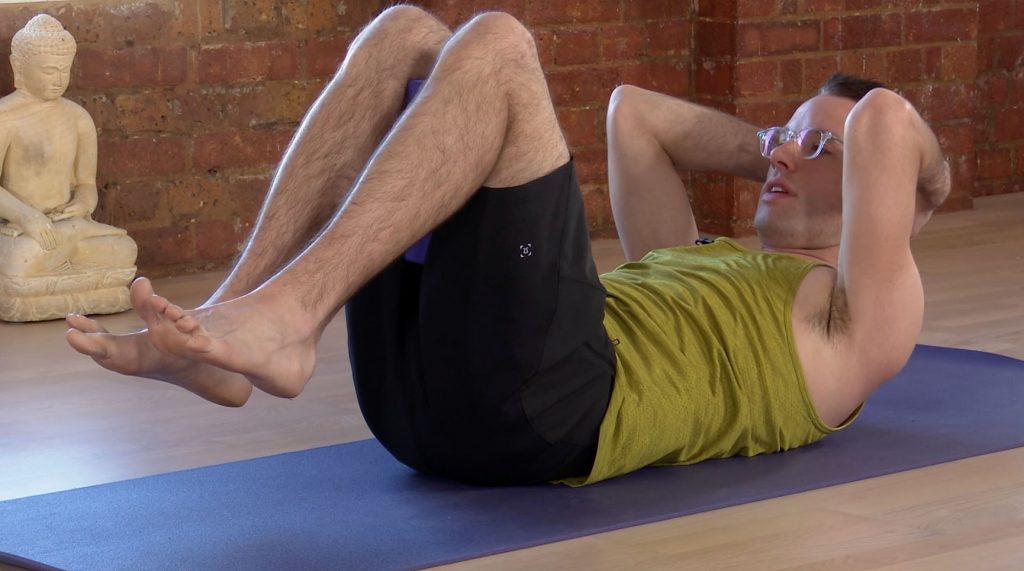
Adam Hocke and Rakhee Jasani discuss yoga and strength. Why is strength a key factor in keeping us healthy in the long-term? And can yoga make you strong?
Does yoga make you strong? For many of us strength can have very specific connotations. For me, it conjures up a physical robustness that I can sometimes equate with an extreme. I equate strength superhuman feats of endurance combined with physical fatigue. I don’t often think of yoga. And yet, after years of consistent yoga practice, I do feel stronger than I have previously. I have developed a physical strength I didn’t have in my twenties and thirties and mental and emotional resilience. I turned to Adam Hocke to try and understand more about strength as it relates to yoga.
What is strength as it relates to yoga?
Yoga isn’t just about flexibility – strength is a crucial part of the mind and body equation. Strength is not an absolute thing, nor is it objective. What does strength mean to you? Try listing out everything you think about when you think of strength. Then, look again at your list. Is there anything that surprised you?
What does physical strength mean to you, and how do you relate to it emotionally? When it comes to yoga specifically, are there any poses that make you feel strong, and which ones make you feel weak?
There are a variety of ways we can look at strength as it relates to Asana practice. There are four main areas that come to mind.
Muscular Strength
We can look at strength purely in a muscular way – essentially, what’s happening when we think of muscles contracting. In Yoga that would be our ability to support our body weight in poses like plank, downward-facing dog, standing balances, arm balances, handstands and basically anything where we have to stabilise against the force of gravity. We could think about strength joint by joint; wrists have to be strong to help us bear weight, as do the elbows, the hips, the shoulders and the ankles. In short, strength in asana is everything that helps us bear the weight of our body in a variety of different positions in opposition to the force of gravity.
Strength and Flexibility
I also want us to think about strength in terms of how it relates to flexibility. Without strength and coordination, we don’t really have control of our flexibility. It’s when we’re not in control that movements can go too far too quickly, potentially in a way that we could injure ourselves. We can combine strength and flexibility to build mobility which means an active, strong, and coordinated range of motion.
Strength and Resilience
Strength is also what we might think of as another way of describing resilience: physical, mental and emotional, and that is mainly to do with our ability to bounce back from setbacks. Remember we are not training to become invincible, but rather to be resilient enough to get back up when we fall over literally or metaphorically. Endlessly practising crow pose, or your challenge of choice, is not going to build your inner resilience unless you combine that practice with a sense of humour and an attitude of self-compassion and patience through difficulty.
Strength in the Teachings
There is also a strength that we can derive from the teachings of the dharma or the great traditions of yoga philosophy. Remember this strength is there for us to fall back on when things get tough. This strength can support us through life, because we know that whatever happens to us is part of our path of awakening. We are never alone in our adversity for we have the wisdom of thousands of years of teachers and practitioners to hold us up.
Do I need to do more than yoga to build strength?
If you have a wide range of physical activity: you run, climb, go to the gym, do pilates, then you are probably already taking care of all your movement and strengthening needs.
A lot of people, however, use yoga for their primary form of movement and exercise. If that is the case, it’s important that the way you practise postural yoga develops strength through your whole body and progressively adds variable load, resistance, and demand to each joint. Yoga is a bit limited by only using body weight so you will need to get creative!
And please hear this: yoga is not a good way to develop cardiovascular strength. It will be far more efficient to run, cycle, or swim.
So, how do we build strength in yoga?
Standing poses, balance postures, arm balances, inversions, chaturangas, planks… and on and on match strength to all the familiar flexibility challenges. Take time to build these poses up little by little over a long period of time by working in manageable increments and smaller versions (for example, bring your knees down in chaturanga). Then do the following to maximise the effect:
- Slow everything down;
- take away momentum and leverage;
- add resistance and instability, and you will have no choice but to move mindfully with strength. Get creative with small weights in your hands; resistance bands on your outer thighs; or the very simple change of not using your hands to lift your legs into position for shapes like tree pose.
What else should we focus on?
There are a few actions that are often missing in a yoga practice. We have a major blindspot around strengthening the back of the body. Make sure you strengthen your hamstrings and glutes as much as you stretch them. Also make sure you take your arms and shoulders through all ranges of motion, especially into extension (try locust pose arms without clasping your fingers). Find any opportunity you can to ‘pull’ with the arms from overhead (imitate the action of doing a lat pull-down or a chin-up) or from forward (imitate rowing), as we definitely don’t do this much in yoga.
Inspired to have a go? Try this arm balance class from Adam

About Adam Hocke:
Adam Hocke offers compassionate, practical, and joyful yoga classes for all levels. His vinyasa flow and restorative classes are a blend of the traditional practices of yoga with modern understandings of movement and mindfulness.
About Rakhee Jasani:
Rakhee is a yoga teacher, writer and creative leader. Rakhee’s classes combine breath-led yoga, qigong and meditation with restorative calm in sequences that help her students to discover their own creative expression and awaken their spirit. Rakhee has trained with Adam.





Leave a Reply